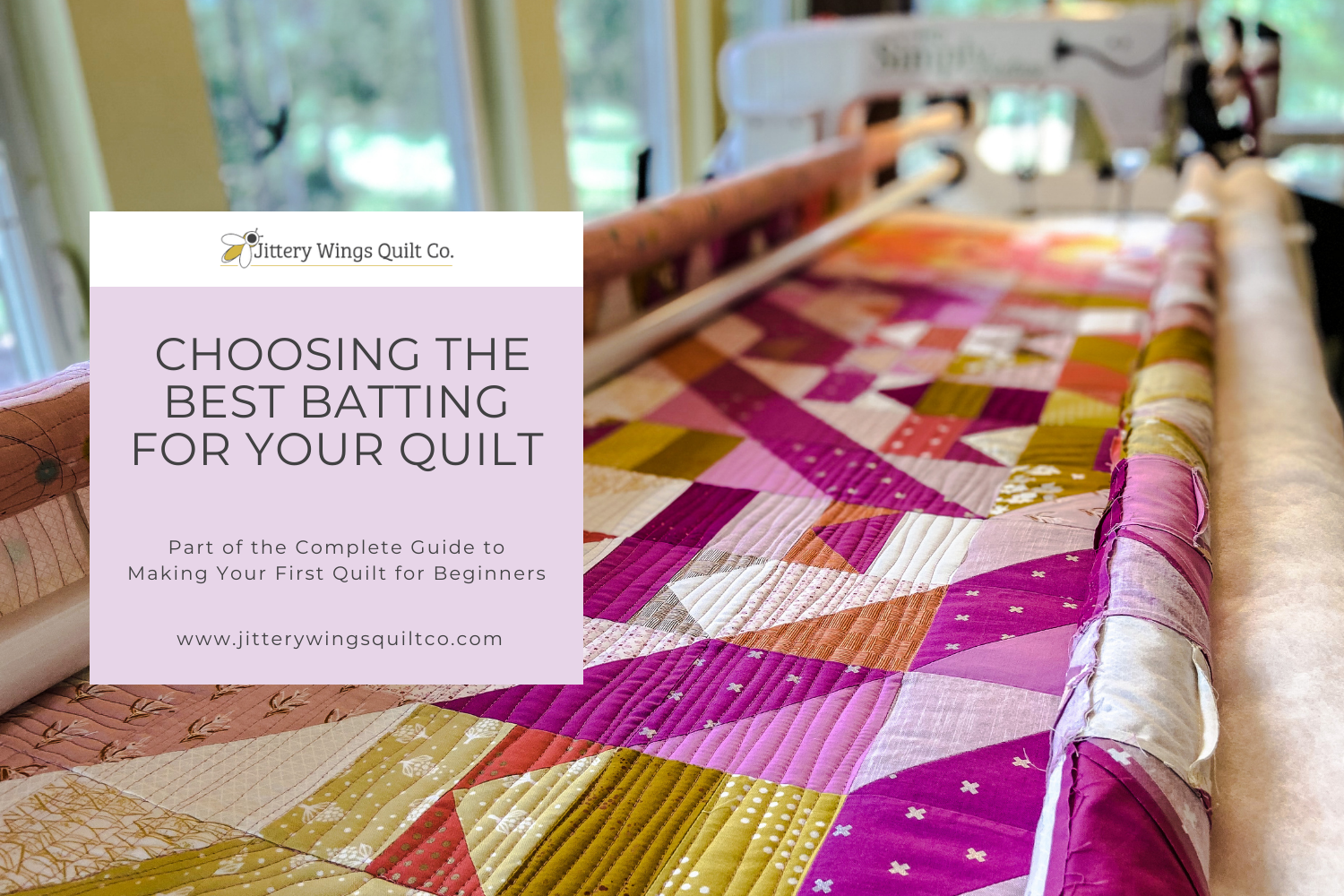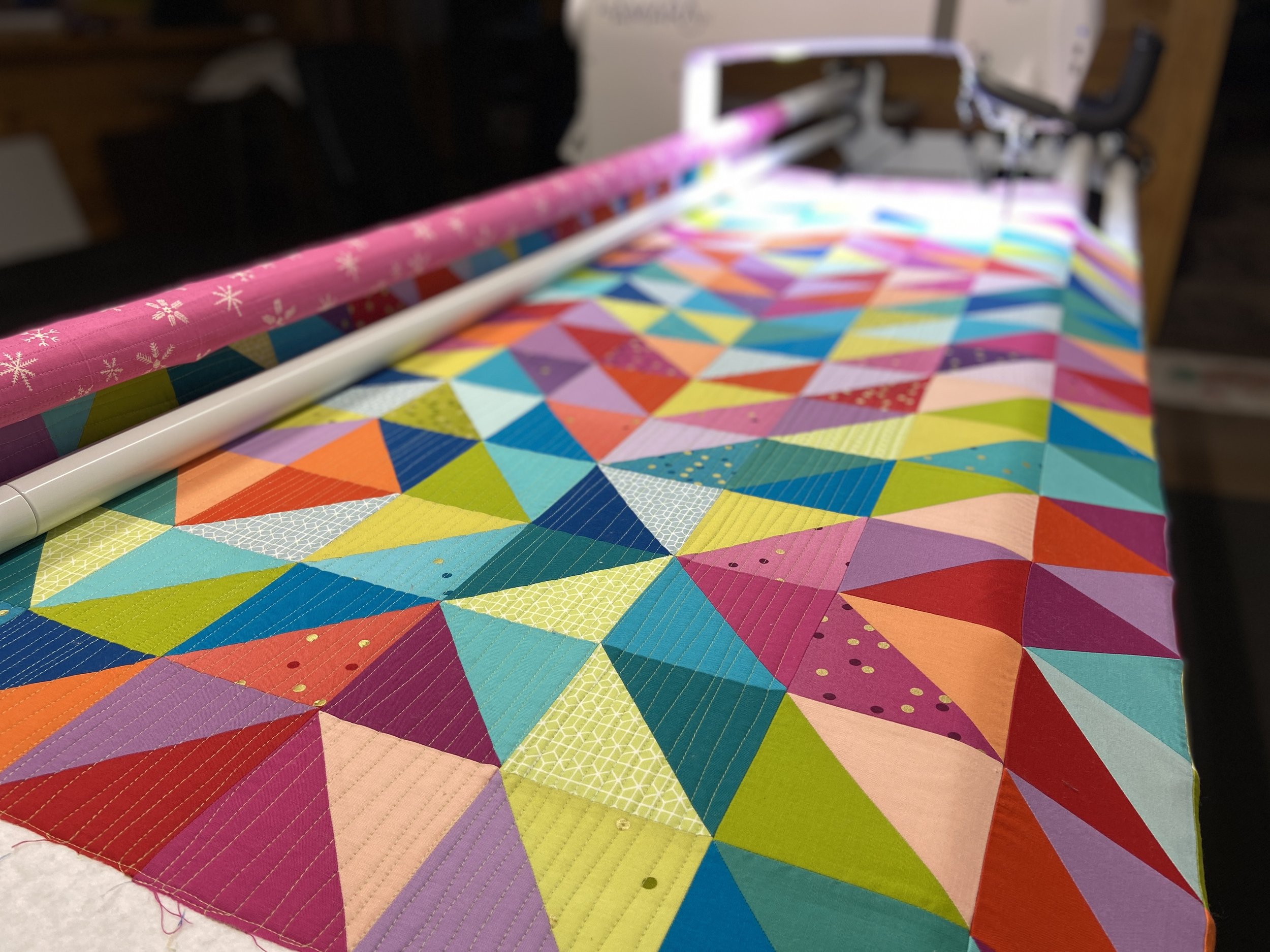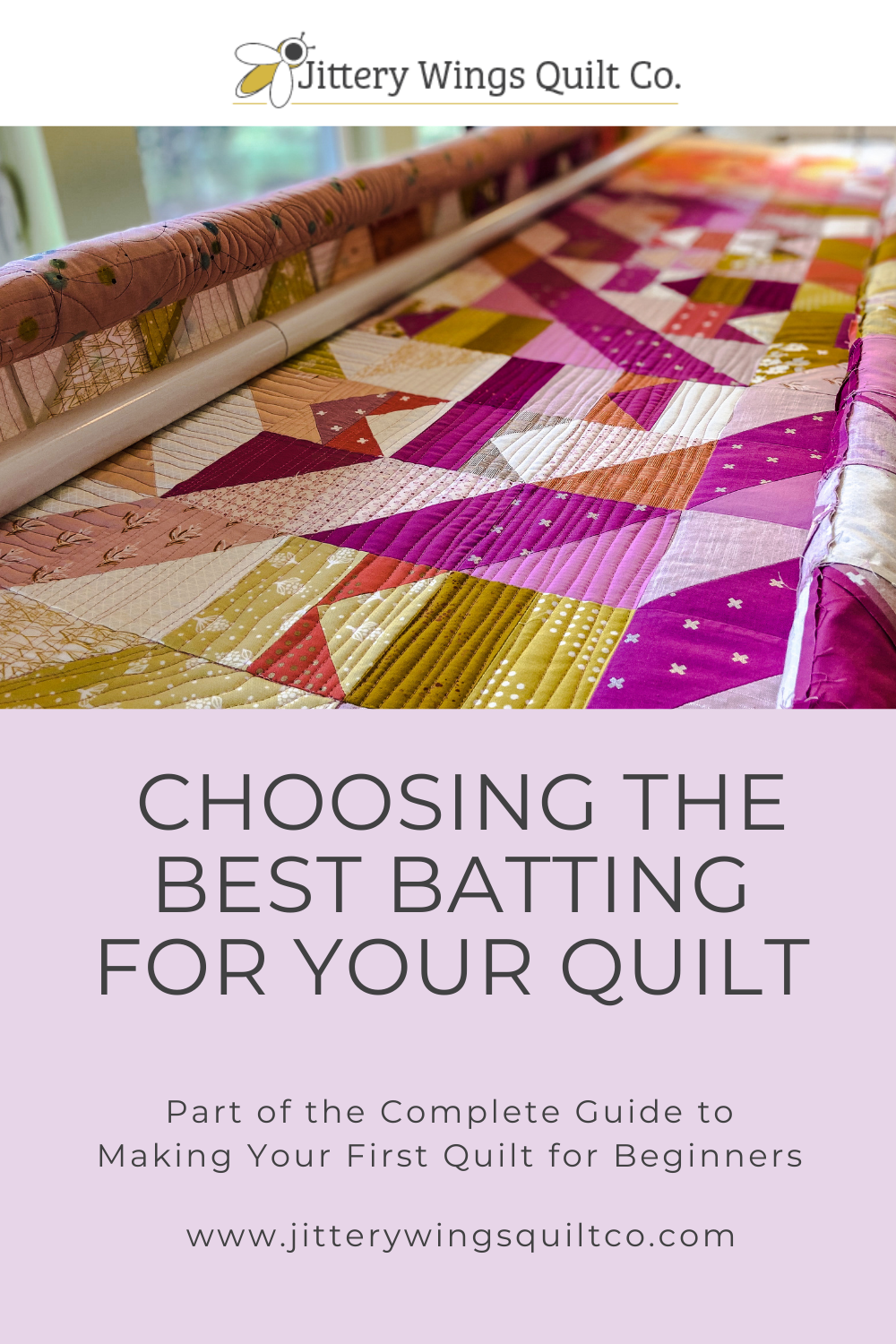Choosing the Best Batting for Your Quilt
Like threads and fabrics, there are a lot of batting options on the market. Batting is made of various types of fibers like cotton, polyester, wool, and bamboo. You can also get blends. Like all things, there are good brands of batting and not-so-good ones. I am currently really loving Quilter’s Dream and Hobbs Battings.
Batting can is sold in individual pre-cut sizes like Crib, Twin, Throw, Queen, and King. It is also sold on long 10, 15, or even 30-yard rolls. Your quilt may be a size other than standard, so be sure to consider that when purchasing. You want your batting to be 3-5” larger on every side if you are having your quilt finished by a longarmer. If you are quilting it yourself, I prefer the batting to be 2-4” longer on all sides.
Before you select your first batting, here are the basics about batting you need to know.
Batting: Batting is the “fluff” that goes between the top of the quilt that you pieced and a large piece of fabric that is used as the backing.
Loft: Loft is how “much fluff” there is to the batting. A low loft means that the batting is flatter and less fluffy. A high loft means that the quilt will be very puffy between the stitches. The batting package will recommend the maximum width apart your stitching should be based on the level of the loft.
Scrim: Some cotton battings have scrim added to them. Scrim is a very thin, mesh-type stabilizer that is needle-punched into the batting. This addition gives batting added strength and stability. This can be helpful in preventing the batting from becoming distorted or stretching as you quilt it on the machine. If you plan to quilt a design with large spaces between the design, choosing batting with scrim can prove to be helpful.
Wool: Wool batting is excellent for warmer climate areas. If you are gifting a quilt to someone in Florida for example, wool is a great choice because it breathes and allows greater airflow. Wool is also a good choice for those who will be folding up the quilt for any reason and they don’t want it to have creases from the fold. Often show quilts will use wool batting. Wool is often the place where a high loft batting is best found. Wool may or may not have a degree of shrinking. The package will tell you.
Cotton: Cotton batting or an 80/20 cotton/poly blend often has a low loft by nature. This is where you will likely find scrim. This is good for baby blankets or a basic quilt for cooler temperatures.
Shrinkage: Batting often has a degree of shrinkage and will show on the package if that can be expected when washed. If you prewash your fabrics, note that you have likely preshrunk them, and the degree of batting shrinkage can make the quilt look more fluffy or bulky after washing. If you don’t prewash your fabrics, the level of fluffy or bulky will be minimized because the batting and fabric will more likely shrink together. (This is the way I prefer it.)


